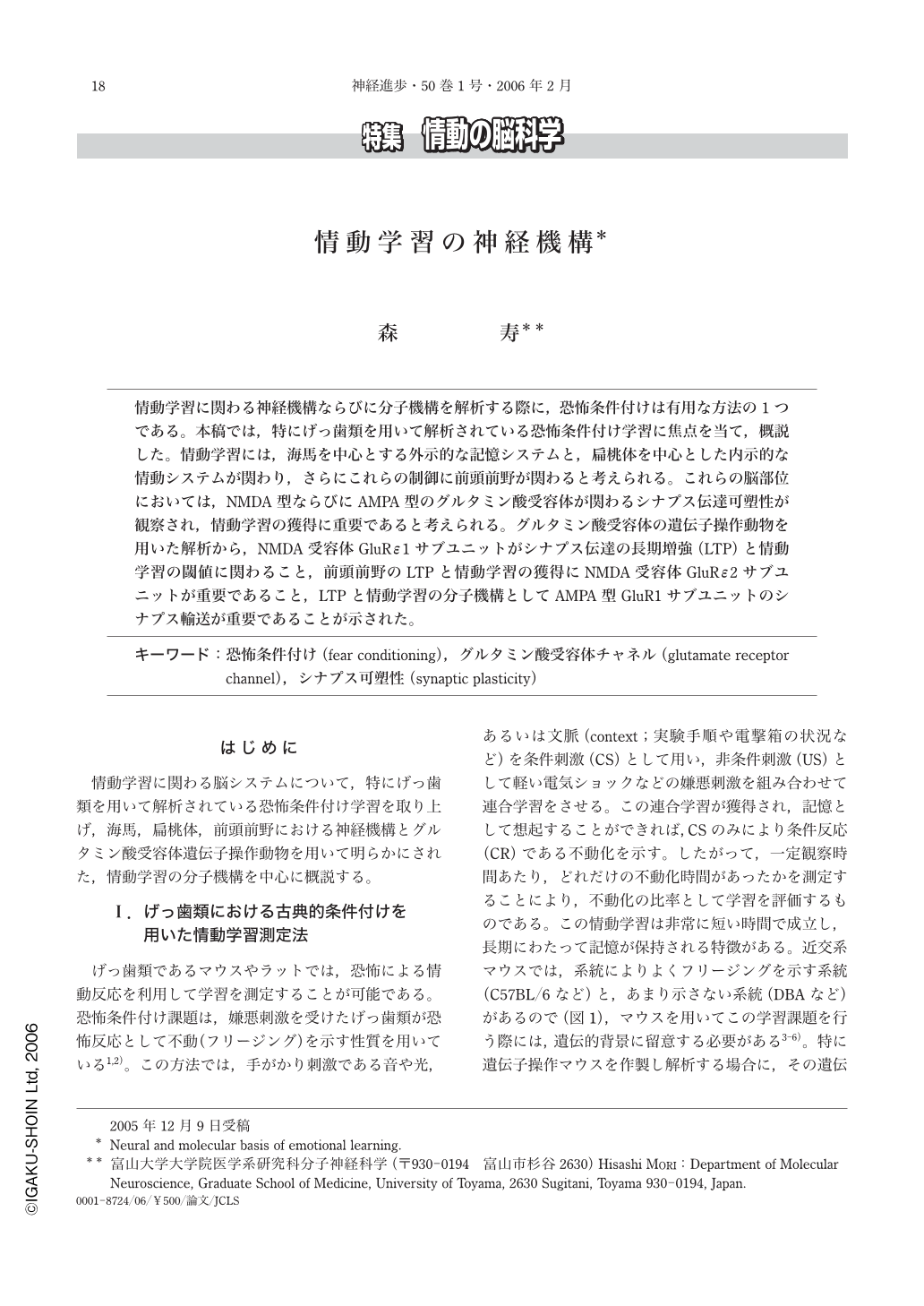Japanese
English
- 有料閲覧
- Abstract 文献概要
- 1ページ目 Look Inside
- 参考文献 Reference
情動学習に関わる神経機構ならびに分子機構を解析する際に,恐怖条件付けは有用な方法の1つである。本稿では,特にげっ歯類を用いて解析されている恐怖条件付け学習に焦点を当て,概説した。情動学習には,海馬を中心とする外示的な記憶システムと,扁桃体を中心とした内示的な情動システムが関わり,さらにこれらの制御に前頭前野が関わると考えられる。これらの脳部位においては,NMDA型ならびにAMPA型のグルタミン酸受容体が関わるシナプス伝達可塑性が観察され,情動学習の獲得に重要であると考えられる。グルタミン酸受容体の遺伝子操作動物を用いた解析から,NMDA受容体GluRε1サブユニットがシナプス伝達の長期増強(LTP)と情動学習の閾値に関わること,前頭前野のLTPと情動学習の獲得にNMDA受容体GluRε2サブユニットが重要であること,LTPと情動学習の分子機構としてAMPA型GluR1サブユニットのシナプス輸送が重要であることが示された。
Fear conditioning is a valuable procedure for studying the neural and molecular basis of the emotional learning. The focus of this review is the roles of glutamate receptor channel subunits in the neural and molecular events in the hippocampus, the amygdala and the prefrontal cortex of the rodent models observed during the fear conditioning. NMDA-type GluRε1 subunit gene knockout mice show increased thresholds for hippocampal long-term potentiation(LTP)and contextual fear conditioning. Inhibition of the NMDA-type GluRε2 subunit in the prefrontal cortex results in the impairment of LTP and contextual fear memory. Furthermore, the blockade of the synaptic incorporation of the AMPA-type GluR1 subunit in lateral amygdala impairs LTP and fear memory. From these results, glutamate receptor subunits are critically involved in the molecular and neural mechanisms of the emotional learning.

Copyright © 2006, Igaku-Shoin Ltd. All rights reserved.


